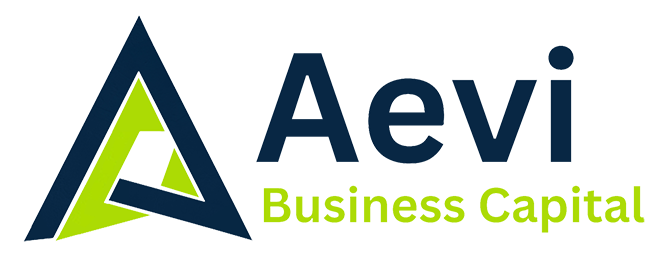Starting or growing a business structured as a Limited Liability Company (LLC) often requires additional funding. Whether the goal is to expand operations, purchase new equipment, or stabilize cash flow, financial backing can make a significant difference. That’s why understanding the ins and outs of business loans specifically designed for LLCs is crucial. Choosing the right loan sets the stage for financial stability and business growth by providing the needed resources without overburdening the business.
Business loans for LLCs vary widely, ranging from traditional term loans to flexible lines of credit and government-backed SBA loans. Each type of loan offers unique benefits tailored to different business needs. Knowing which option to pick can enhance growth prospects and provide security while avoiding unnecessary financial strain. Here, we’ll explore the kinds of loans suited for LLCs and important aspects to consider when making a decision.
Understanding Business Loans for LLCs
When it comes to financing an LLC, numerous loan options are available, each serving different business scenarios. However, knowing which to choose depends on your specific requirements and business objectives.
– Term Loans: These loans are straightforward. You receive a lump sum upfront and repay it over a set term with interest. They’re ideal for significant one-time investments, like buying equipment or expanding facilities.
– Lines of Credit: Unlike term loans, a line of credit gives you access to a pool of funds you can draw from when needed, offering flexibility for managing cash flow or covering unexpected expenses. You only pay interest on the amount you use, making it a feasible option if you need to handle seasonal fluctuations or unplanned expenditures.
– SBA Loans: These are government-backed loans aimed at helping small businesses, including LLCs, secure financing with favorable terms. They often come with low interest rates and flexible repayment schedules, making them an attractive option for those who qualify.
Choosing the correct loan helps align financial outcomes with business goals. For example, if an LLC plans to renovate its office space, a term loan with a fixed interest rate might be preferable. On the other hand, if an unexpected order needs funding, a line of credit could be more suitable due to its flexibility. Understanding these options ensures that your LLC not only secures the necessary funds but also does so in a manner that supports ongoing financial health.
Factors to Consider When Choosing a Business Loan for Your LLC
When deciding on the best loan for your LLC, it’s important to examine several key factors that can influence your decision and the long-term financial health of your business.
1. Interest Rates and Repayment Terms: Understanding the cost of borrowing is crucial. Look for loans with competitive interest rates that fit your repayment capabilities. Shorter terms might mean paying less interest overall, but they often require higher monthly payments.
2. Collateral Requirements: Some loans require collateral, meaning you must pledge an asset that the lender can seize if you default. Consider whether you’re willing to risk personal or business assets and weigh these against unsecured options, which might come with higher interest rates.
3. Loan Amount and Financial Flexibility: It’s wise to borrow only what you need, as taking on excessive debt can strain your resources. Check whether the loan offers flexibility in adjusting repayment terms if your business faces an unexpected situation requiring financial adjustments.
4. Financial Health and Credit History: Lenders often look at your LLC’s financial health and credit history. A strong credit score can open doors to better loan terms and conditions. Reviewing and improving your business credit before applying can provide benefits and broaden your loan options.
Top Business Loan Options for LLCs
Choosing the right loan depends greatly on understanding what each option offers. Here’s a look at some of the top choices available for LLCs:
– Term Loans: Perfect for large, one-time expenses like buying new equipment or expanding operations. Pros include fixed interest rates and predictable monthly payments. Cons involve lengthy approval processes and the obligation of collateral depending on the lender.
– Lines of Credit: Offer great flexibility, allowing you to borrow only what you need and pay interest on just that amount. Pros are the recurring access to funds, while cons might include variable interest rates that can increase costs over time.
– SBA Loans: A reliable option for smaller businesses needing funding with favorable terms like low interest and extended repayment timelines. The main downside is the lengthy application process and stringent requirements for approval.
For instance, an LLC looking for temporary cash flow during off-peak seasons might benefit greatly from a line of credit. It allows the business to cover essential expenses and only pay interest on what they use, ensuring they remain equipped for peak seasons.
Making the Right Choice for Your LLC
Choosing the right business loan requires thoughtful consideration of your business’s unique needs. By evaluating options like interest rates, collateral needs, and financial health, you’re in a better position to make informed choices. Consider how each loan type aligns with your long-term financial strategy and operational needs. Consulting with a financial advisor or loan specialist can provide insights tailored to your specific situation. Selecting the right loan can unlock potential for growth and stability, ensuring your LLC is prepared for whatever challenges and opportunities lie ahead.
Choosing the right financial support can be a game changer for ensuring your LLC’s growth and stability. If you’re ready to explore funds for a startup business, Aevi Consulting can guide you through options tailored to your specific goals. Get in touch to find a loan solution that fits your next big move.










